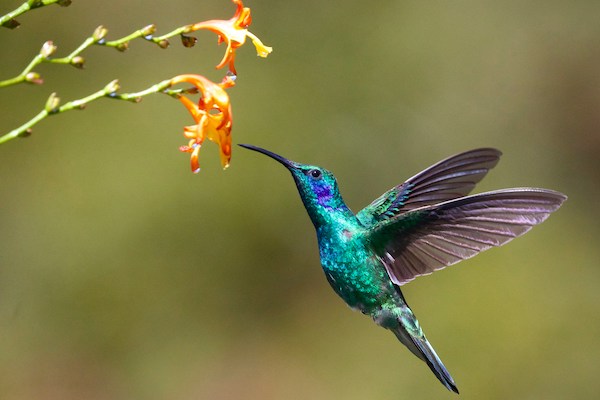How to Make Food for Hummingbirds: A Simple Guide for Bird Lovers

There’s a special thrill in seeing a hummingbird zip into your yard, wings buzzing like tiny propellers as it hovers at a flower or feeder. If you’ve ever watched one up close, you know how magical it feels. Many bird lovers set out feeders to invite hummingbirds to return again and again—and the best way to do that is by making their favorite food yourself.
The good news? It couldn’t be simpler. With just a few everyday ingredients, you can create a safe, nourishing nectar that will keep these little jewels coming back.
The Basics: What Hummingbirds Eat
In the wild, hummingbirds sip nectar from flowers, relying on the natural sugar to fuel their fast-paced lives. They also eat tiny insects for protein, but when it comes to backyard feeders, nectar is what attracts them.
The homemade version is just sugar water—no need for red dyes or fancy additives. In fact, those extras can do more harm than good. What hummingbirds really want is clean, fresh sugar water that mimics flower nectar.
The Classic Recipe
Here’s the tried-and-true formula:
- 1 part white granulated sugar
- 4 parts water
That’s it. For example, mix 1 cup of sugar with 4 cups of water.
Step-by-Step:
- Boil the water (this helps the sugar dissolve fully and keeps the nectar fresh a bit longer).
- Stir in the sugar until it’s completely dissolved.
- Let it cool to room temperature.
- Fill your feeder, and store any extra nectar in the fridge for up to a week.
Important Tips for Healthy Feeders
- Skip the red dye. The bright color of most feeders is enough to attract hummingbirds. Dyes can be harmful.
- Clean often. Sugar water can ferment or grow mold quickly. Wash and refill your feeder every 3–4 days, and more often in hot weather.
- Choose the right feeder. Look for feeders that are easy to take apart and clean. Avoid ones with tiny crevices where mold can hide.
Creating a Hummingbird-Friendly Yard
Homemade nectar is a great start, but you can also make your yard more inviting by planting hummingbird-friendly flowers. Red, orange, and pink tubular blooms—like salvia, bee balm, or trumpet vine—are especially appealing. A mix of feeders and flowers will give hummingbirds more reasons to linger nearby.
Why It’s Worth It
There’s something deeply rewarding about preparing food for hummingbirds and watching them return, day after day, to your feeder. It’s a reminder that even the smallest effort—a little sugar and water—can connect us to nature in a big way.
So next time you hear that familiar buzz in your garden, you’ll know you’ve played a part in giving these tiny travelers the fuel they need.
Tip for birdwatchers: If you love observing hummingbirds up close, a good pair of binoculars can bring their dazzling colors and fast wingbeats into crisp detail.

